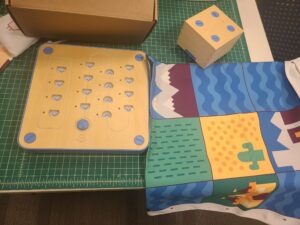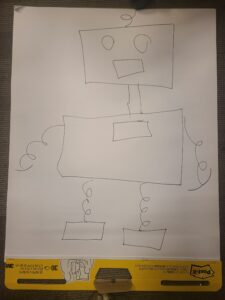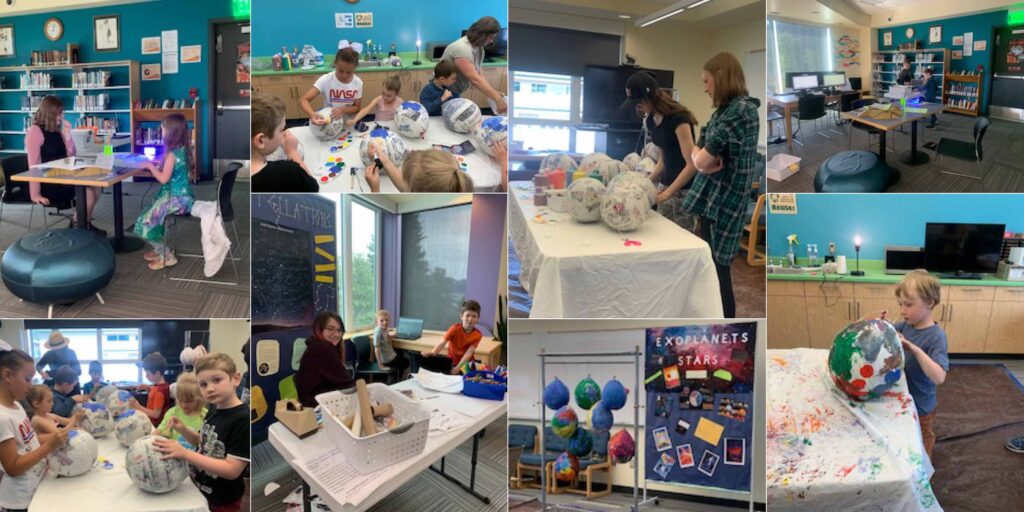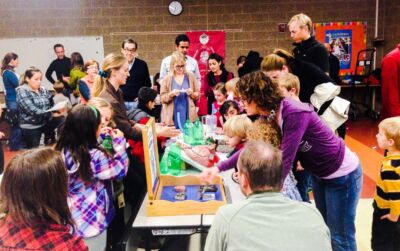Program in a Post: Tiny Coders

With technology becoming more and more prevalent in day-to-day life, kids are introduced to technology earlier and earlier. There are varying ideas about how old children should be when introduced to screen time. It’s typically recommended to be limited for children under 5 and avoided with children under 2. However, computational thinking and digital literacy can be taught at any age. And there are ways to introduce young children to these concepts and robotics without using a screen.
This was the inspiration for a program I have done in multiple formats called Tiny Coders. In a nutshell, it is a coding and computational thinking based program for children ages 2-5 and their caregivers. I limited it at 25 participants. I prefaced the storytime with the importance of computational thinking and digital literacy, did a draw-and-tell story about a robot, made the Cubetto robot move around the room, read a story, and did a flannel board about sequencing.I also had some robots displayed at the front of the room to show parents ones that were appropriate for toddlers. The kids thought it was really cool to see robots and the parents were excited that the program really did fit their age level.

Recommended Books that encourage computational thinking and introduce coding concepts:
General Coding- “Girls who Code” picture book series, “I Can Code” series, or “Code Play” series.
Fun Technology Books- ”Doll-E 2.0” by Shanda McCloskey
Sequencing- (following an order) and algorithms (following instructions to complete a task)- “The Very Hungry Caterpillar,” by Eric Carle, “Growing Vegetable Soup” by Lois Ehlert,
Conditionals (If/then parts of coding)- “Hello Ruby: Adventures in Coding” by Linda Liukas “If You Give a Mouse a Cookie” by Laura Numeroff
Stacks (information packaged together) and Queues (information waiting)- “There Was an Old Lady Who Swallowed a Fly,” by Lucille Colandro, “The Long, Long Line,” by Tomoko Umura
Recommended Robots for a Younger Crowd
I like using Cubetto with toddlers, because it is a screen free coding system, looks cutre, and is easy to incorporate in a group (everyone can input an instruction piece on their own) etc. etc. You can program Dot the robot to make different animal sounds and use it in storytime.
Recommended Activities

I always enjoy using this robot draw-and-tell story as a fun introduction to what we are talking about.
Letting children draw different coding blocks from a blog and insert them into the Cubetto’s base board engages them with the robot and also helps them visualize how coding blocks work.
Simon Says is a good game for teaching how every detail counts in a code. Another game I’ve done in past programs, is to have a base “code,” and then change it with different dance moves. I have different blocks of action words like “dance, spin and jump,” and then different numbers for how many times to do an action. This shows how you can edit and change code.
I hope this inspires you to do a coding story time of your own and would love to hear about it!





Responses